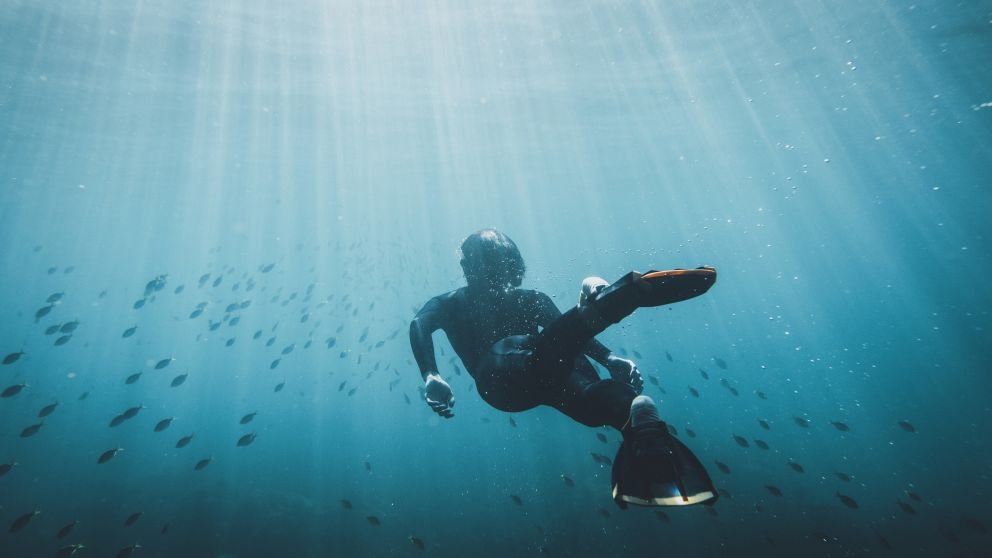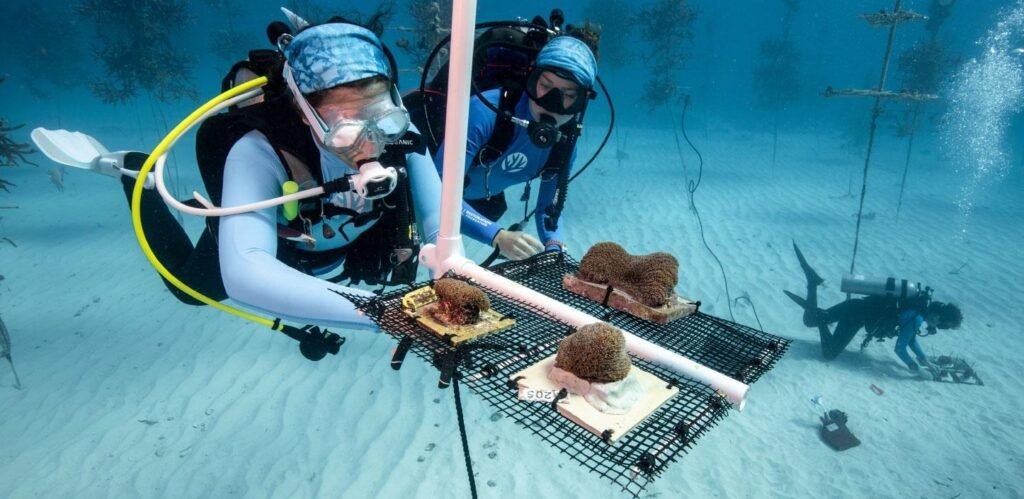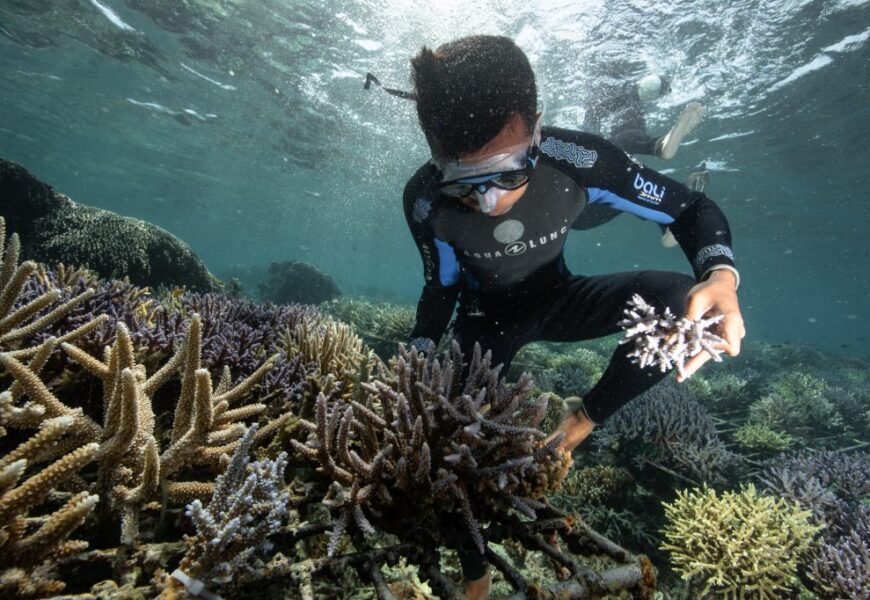“Embark on an Underwater Odyssey: Unveiling the Secrets of the Great Barrier Reef”
Key Takeaways:
- The Great Barrier Reef is a stunning natural wonder off Australia’s coast.
- You can explore it through snorkeling, diving, or helicopter tours.
- Protecting the reef is vital; practice sustainable tourism.
- Support organizations working to preserve the reef.
- Consider nearby islands and learning centers for a richer experience.
- Plan well, choose wisely, and capture memories responsibly.
- Safeguarding the reef ensures its beauty for the future.
Imagine a world beneath the waves, where an explosion of colors and life waits to be discovered. It is a realm so enchanting that it seems straight out of a fantasy novel, yet it exists here on our planet. Welcome to the Great Barrier Reef, a natural wonder that has captured the hearts of adventurers, scientists, and dreamers for generations. Stretching over 2,300 kilometers along Australia’s northeastern coast, this living masterpiece is not just a coral reef – it’s a thriving ecosystem teeming with life. From the smallest, most intricately patterned fish to the grandeur of massive coral formations, the Great Barrier Reef is a testament to the beauty and complexity of the natural world. In this article, we will unveil the secrets of this underwater paradise and guide you through the best ways to experience its splendor firsthand. Whether you’re an avid snorkeler, a daring scuba diver, or an adventurer seeking a bird’s-eye view, there’s a perfect way for everyone to immerse themselves in the magic of the Great Barrier Reef. Let’s embark on this journey together, where the azure waters hold mysteries waiting to be unraveled and where every ripple tells a story of life in its most vibrant form.
Snorkeling: Immerse Yourself in the Underwater Marvels

When it comes to experiencing the enchanting world of the Great Barrier Reef, snorkeling emerges as a gateway to a realm of vibrant colors and mesmerizing marine life. Picture yourself floating effortlessly on the surface of the crystal-clear waters, peering into an underwater universe that seems almost surreal. Snorkeling isn’t just an activity; it’s an invitation to witness the delicate dance of life beneath the waves.
Exploring the Basics of Snorkeling
For those new to underwater exploration, snorkeling offers an accessible and thrilling introduction. Armed with a mask that allows you to see underwater, a snorkel that lets you breathe while your face is submerged, and a pair of fins that enhance your maneuverability, you’re ready to embark on your underwater adventure.
As you dip below the surface, a world of wonders unfolds. Coral formations, resembling intricate sculptures, stretch out in a breathtaking array of shapes and colors. Schools of tropical fish, painted in hues you didn’t know existed, navigate through the reef with a grace that is nothing short of mesmerizing. The sensation of weightlessness and the sound of your breath create an intimate connection with the marine world around you.
Tips for First-Time Snorkelers
If you’re new to snorkeling, there’s no need to feel overwhelmed. Here are some tips to ensure a smooth and unforgettable experience:
Choose the Right Equipment: Comfort is key. Ensure your mask fits snugly without causing discomfort, and select fins that fit comfortably. A well-fitting snorkel will make breathing effortless.
Practice in Calm Waters: Practice in a calm and shallow area before venturing into deeper waters. This helps you get accustomed to breathing through the snorkel and using the fins.
Stay Relaxed: Feeling a mixture of excitement and nervousness is natural. Focus on your breathing, and remember that the reef’s inhabitants are more curious than threatening.
Float and Observe: Snorkeling is observing marine life in its natural habitat. Float gently on the surface, letting the current guide you as you watch the underwater ballet unfold beneath you.
Respect Marine Life: Maintain a respectful distance from the coral and marine creatures. Avoid touching anything, as even the lightest touch can damage delicate organisms.
Stay Safe: Always snorkel with a buddy, and be aware of your surroundings. Keep an eye on the changing tide and weather conditions.
Protect Yourself from the Sun: While the underwater spectacle might steal your attention, remember to protect yourself from the sun’s rays. Wear a reef-safe sunscreen and consider a rash guard for extra protection.
The Importance of Responsible Tourism: Nurturing the Great Barrier Reef for Future Generations
As the sun’s golden rays dance upon the turquoise waters of the Great Barrier Reef, a delicate ecosystem lies beneath the surface, teeming with life. This world-renowned natural wonder, stretching along Australia’s northeastern coast, is a breathtaking spectacle of marine beauty and a fragile ecosystem facing a range of environmental threats. The call to action has never been clearer: responsible tourism is the key to safeguarding this underwater paradise for generations.
Facing Environmental Threats
The Great Barrier Reef, a UNESCO World Heritage Site, faces many challenges threatening its existence. Climate change, fueled by human activities, has led to rising sea temperatures and ocean acidification, causing coral bleaching and affecting the health of marine organisms. Pollution from coastal development, agriculture runoff, and marine litter also affect the reef’s vitality.
Coral bleaching, a stark result of rising temperatures, strips the reef of its vibrant colors and weakens its ability to support marine life. This phenomenon not only disrupts the natural beauty that draws visitors from around the globe but also disrupts the intricate balance of the reef’s ecosystem.
Promoting Responsible Tourism Practices
The stakes are high, but the solutions are within our reach. Responsible tourism, characterized by thoughtful and sustainable travel practices, offers a lifeline to the Great Barrier Reef. By minimizing our negative impact on this delicate environment, we can play a significant role in preserving its magnificence.
Cultivating Awareness: The first step toward responsible tourism is education. Travelers should be aware of the reef’s fragility and the actions that can harm it. Local initiatives and tour operators can provide valuable information to ensure visitors make informed choices.
Choosing Ethical Operators: Opting for tour operators committed to sustainable practices is paramount. These operators prioritize low-impact activities, adhere to guidelines for maintaining distance from marine life, and properly manage waste disposal.
Reducing Carbon Footprint: Since climate change is a major threat, minimizing your carbon footprint is crucial. Choose eco-friendly transportation options, and consider carbon offset programs to counteract the emissions from your travel.
Protecting Marine Life: When snorkeling or diving, resist the urge to touch or disturb marine life. Coral formations are delicate and can take decades to recover from damage. Maintain a respectful distance and adhere to guidelines set by experts.
Minimizing Waste: Be mindful of waste, particularly single-use plastics. Carry reusable water bottles, containers, and bags to reduce the amount of plastic entering the ocean.
Using Reef-Safe Sunscreen: Chemicals found in many sunscreens can harm coral reefs. Opt for reef-safe sunscreen options that protect your skin without harming marine life.
Supporting Conservation Efforts: Many organizations are dedicated to preserving the Great Barrier Reef. Consider donating to or volunteering with these initiatives to contribute directly to reef protection.
Supporting Reef Conservation Efforts: Sustaining the Great Barrier Reef for Tomorrow

Beneath the azure waves of the Great Barrier Reef lies a realm of unparalleled beauty and biodiversity. Yet, this underwater paradise faces a daunting battle for survival against many threats. In the face of this challenge, a network of passionate organizations and initiatives have emerged, dedicating their efforts to preserving and protecting this natural wonder. As travelers and stewards of the environment, we can make a difference. By supporting these conservation endeavors, we can play a crucial role in ensuring that the Great Barrier Reef remains a vibrant ecosystem for generations.
Showcasing Organizations and Initiatives
The road to conserving the Great Barrier Reef is paved by the hands of those who have dedicated their lives to its protection. These organizations work tirelessly to combat coral bleaching, reduce pollution, and raise awareness about the reef’s fragility. They are the unsung heroes of the underwater world, and their initiatives range from scientific research to community engagement.
Great Barrier Reef Marine Park Authority (GBRMPA): At the forefront of reef management, GBRMPA plays a pivotal role in protecting the reef. They implement zoning plans, regulate tourism activities, and collaborate with stakeholders to ensure the reef’s sustainability.
Reef Restoration Foundation: This organization focuses on active reef restoration, cultivating resilient coral species in nurseries and transplanting them to areas affected by bleaching. Their efforts aim to accelerate natural recovery and promote the growth of healthy coral colonies.
Citizen Science Initiatives: Various projects engage the public in data collection and monitoring efforts. Reef Check Australia and Eye on the Reef encourage tourists and locals alike to report their observations, contributing to a comprehensive understanding of the reef’s condition.
Research Institutions: Universities and research centers, such as the Australian Institute of Marine Science (AIMS), conduct critical studies to comprehend the reef’s ecosystem dynamics and find innovative solutions for its preservation.
Contribute to Conservation Through Your Visits
Travelers to the Great Barrier Reef hold a unique power – the power to contribute directly to its conservation. By making conscious choices during your visit, you can support the ongoing efforts to protect this fragile ecosystem:
Choose Eco-Friendly Tours: Opt for tour operators that prioritize low-impact activities, adhere to guidelines, and contribute to reef conservation initiatives.
Participate in Coral Planting: Some tours offer the opportunity to participate in coral planting activities. By assisting in cultivating and devising corals, you can actively contribute to reef restoration.
Donate or Volunteer: Many organizations offer opportunities for visitors to donate or volunteer their time and skills. Even a small contribution can make a significant impact on their conservation projects.
Practice Responsible Behavior: Respect marine life and coral formations by maintaining a safe distance, refraining from touching anything, and adhering to guidelines provided by guides.
Spread Awareness: Share your experiences and knowledge about the reef’s importance with others. The more people know about its significance, the stronger the collective effort to protect it.
Conclusion
Snorkeling allows you to see the incredible world beneath the surface and have an unforgettable experience with the reef. This accessible activity enables you to participate in the story of the reef, even briefly, whether you are an expert swimmer or a beginner. You’ll bring back memories of the reef’s colorful tapestry and a fresh appreciation for the wonders nature has to offer when you emerge from your underwater journey.
We have the privilege of discovering the wonders of the Great Barrier Reef as tourists. This privilege carries with it the obligation to prevent any lasting evidence of our presence. By adopting responsible tourism practices, we take on the role of stewards of this magnificent ecosystem, assisting in reducing the threats it faces and fostering a legacy beyond our own lives. Our decisions today will determine whether or not the Great Barrier Reef survives; let’s ensure it continues to be a vibrant treasure for future generations.
We all share responsibility for the Great Barrier Reef’s survival. We can join a strong movement to protect this priceless ecosystem by making decisions that align with conservation organizations’ objectives. Every snorkel, every dive, and every trip can help leave a legacy of preservation, enabling us to show future generations the wonder of the reef. Let’s keep in mind that, as we take in its beauty, our presence has the potential to be a catalyst for improvement, ensuring that the Great Barrier Reef continues to be a thriving masterpiece for years to come.







